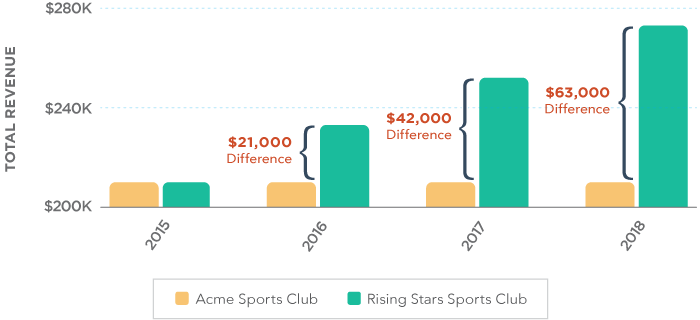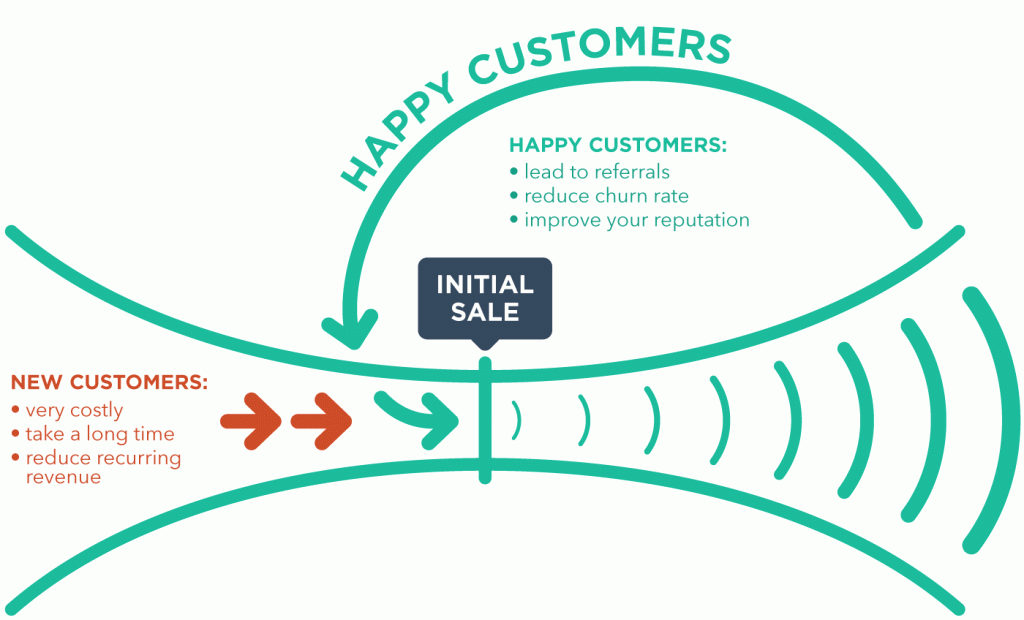Abstract
The concept of customer churn should be a prominent concern for club owners and directors. Customer churn – which is defined simply as a customer ending their relationship with a company – has a direct impact on customer lifetime value and the ability to grow a business.
Club sports are the ultimate recurring revenue business. In an ideal setting, a club acquires a family at a young age, and that family stays with the club until college. However, as most in this space are aware, this is easier said than done.
This paper will explore how tracking and managing customer churn is extremely important to the long term success of a club and its ability to grow.
Introduction
In a previous post, we established that the past decade has seen a huge upswing in the number of organizations and club teams offering youth sports participants a home.
From events, to new teams, to facilities, to travel, there are new enterprises entering the youth sports space at every level. This, inevitably, has increased competition as families evaluate the options for their student-athletes.
In a survey conducted by SportsRecruits of club players and their families, one takeaway in particular highlighted how top of mind customer churn should be for club owners and their staff:
Said another way, if you are a club not taking care of each family, you are currently or will soon experience customer churn. Families are looking to the club for guidance and if they do not feel like they are getting it, they will look elsewhere.
Customer Churn – The Importance of Recurring Revenue
To better understand the need to reduce customer churn, let’s explore two fictional organizations, “Acme Sports Club” and “Rising Stars Sports Club”.
Both clubs currently have teams of 20 players each at the 5th, 6th, 7th, 8th, 9th, 10th and 11th grade levels.
When a family joins either club in 5th grade and stays through high school, the club stands to make 85-90% of their overall revenue from that family in renewals. Conversely, only 10-15% of revenue from that family results from their initial, or sign-up year.
As such, both clubs should have a rock solid plan in place to make sure they are addressing the unique needs of each family.
Financial Impact of Churn
With the increasing demands of parents, lets look at the impact customer churn has on our two clubs over the next three years.
Both clubs kick off their 2015 season with 20 players on their 5th, 6th, 7th, 8th, 9th, 10th and 11th grade teams. Dues for each player are $1,500 for the year.
In the coming 3 years, Acme Sports Club and Rising Sports Club each add 3 new players per team/per year. Good stuff!
Where the clubs differ is how they experience customer churn.
Acme Sports Club sees 3 players per team/per year leave their club, while Rising Sports Club sees only 1 player per team/per year leave the club. Said another way, Acme Sports Club is seeing 15% customer churn while Rising Sports Club is seeing ~5% customer churn.
On the surface it seems like this is not a huge deal for Acme Sports Club, because they are adding 3 players per year to replace the players they lost. They are breaking even, right? However, looking at the cumulative effect of the churn after a few years, one sees a different picture.
The graph below demonstrate the revenues of Acme Sports Club vs. Rising Stars Sports Club.
Analysis
That graph is noteworthy because both clubs were adding the same amount of new players each year, which on the surface would indicate everything was fine. However, that seemingly small difference in customer churn results in a significant difference in total revenue.
Rising Stars Sports Club had the infrastructure in place to ensure each family feels like their son or daughter is getting the proper attention. What seems like just a few players leaving the club each year ends up costing Acme Sports Club tens of thousands of dollars.
Every club is going to have some churn. Families move, athletes decide to focus on other sports – the list goes on. However, when players leave a club because they do not feel like they were treated fairly, the club was disorganized or for a similar reason, the long-term effects on the club’s business can be crippling.
We have explored a few ways clubs can reduce its churn rate, which you can read here. Many of the best ways involve adopting technology as a central point of the organization’s administration so as to keep ahead of the trends in the space.
Takeaways – What It Means for Your Business
Here are the key points to remember:
1. Customer churn is a real challenge, and needs to be addressed.
2. As a business grows, churn becomes a much bigger issue. Simply put, as you grow, you’ll feel the loss of 20 players more than you felt 5 players. It becomes increasingly difficult to acquire the number of players that left.
3.Organizations do not make a significant percentage of their revenue when they acquire a new family, but instead when that family renews each year. Starting over to replace a lost customer should be considered a loss.
4.Last but not least, happy customers not only lead to recurring revenue, but act as a free lead generator for the club.
Conclusion
Customer churn is a major concern for any business, and organizations in the club space are no different. Thinking about reducing the amount of customers a club is losing is a simple way to not only run a successful business, but to grow it.
In an ever-crowded club sports landscape, those clubs that can effectively manage to keep their churn rates low will be in the best position to continue to grow their organizations.
To see how SportsRecruits can help your club, schedule a demo here or call us at 917-525-2101






